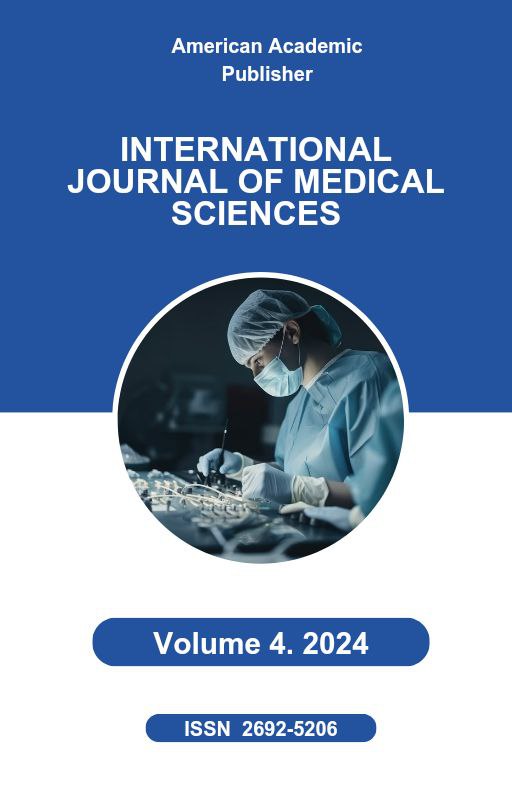 Articles
| Open Access |
https://doi.org/10.55640/
Articles
| Open Access |
https://doi.org/10.55640/
GENETIC AND EPIGENETIC FACTORS IN TWIN PREGNANCIES: IMPACT ON MODERN DIAGNOSTICS AND PERINATAL OUTCOMES
Axtamova Nilufar Akbarovna ,Tursoatova Shaxlo Muhiddin kizi,Ernazarova Madina Shavkat kizi , Second-Year Master's Residency Student in Obstetrics and Gynecology No. 1, Samarkand State Medical University (SamSMU), Samarkand, Uzbekistan,Second-Year Master's Residency Student in Obstetrics and Gynecology No. 1, Samarkand State Medical University (SamSMU), Samarkand, Uzbekistan,PhD, Assistant of the Department of Obstetrics and Gynecology No. 1 SamSMUAbstract
Twin pregnancies, encompassing both monozygotic (MZ) and dizygotic (DZ) types, represent a unique model for studying the interplay between genetic and epigenetic factors due to shared or divergent intrauterine environments. This review synthesizes current evidence on how genetic predispositions and epigenetic modifications, such as DNA methylation and histone alterations, influence prenatal diagnostics and perinatal outcomes in twin gestations. Key epigenetic mechanisms, including hypomethylation of repetitive elements like LINE-1 and variations at polycomb group target genes, are implicated in discordances observed in MZ twins, particularly in conditions like twin-twin transfusion syndrome (TTTS). Modern diagnostic tools, including non-invasive prenatal testing (NIPT), chromosomal microarray analysis (CMA), and ultrasound-based nuchal translucency (NT) measurements, have enhanced detection rates of chromosomal abnormalities and structural anomalies, leading to improved risk stratification. Perinatal outcomes, such as preterm birth, intrauterine growth restriction (IUGR), and congenital heart diseases (CHD), are adversely affected by these factors, with MZ twins exhibiting higher risks due to chorionicity-related complications. Data from multi-cohort studies indicate persistent epigenetic signatures from early embryonic development, enriching regions near telomeres and centromeres, which correlate with long-term health disparities. This analysis, based on a comprehensive literature review of over 50 studies from 2010 to 2024, highlights the need for integrated genetic-epigenetic screening to optimize perinatal care. Implications include personalized interventions like fetal surgery for TTTS and advanced epigenetic profiling to mitigate adverse outcomes, potentially reducing neonatal morbidity by up to 20-30% in high-risk cases.
Keywords
Twin pregnancies; Monozygotic twins; Dizygotic twins; Epigenetics; DNA methylation; Prenatal diagnostics; Perinatal outcomes; Twin-twin transfusion syndrome; Chromosomal microarray analysis; Nuchal translucency
References
Marsit CJ, et al. (2013). Developmental genes targeted for epigenetic variation between twin-twin transfusion syndrome children.
van Dongen J, et al. (2021). Identical twins carry a persistent epigenetic signature of early genome programming. Nature Communications.
Arora M, et al. (2021). Epidemiology, Genetics and Epigenetics of Congenital Heart Diseases in Twins. Cureus.
Gordon L, et al. (2010). DNA methylation analysis of multiple tissues from newborn twins reveals heritability of the human methylome. Human Molecular Genetics.
Dsouza NR, et al. (2021). Multifetal Gestations and Associated Perinatal Risks. NeoReviews.
Apicella C, et al. (2024). Genetic and Epigenetic Insights into Pregnancy-Related Complications.
Amiresmaili A, et al. (2023). Prenatal diagnosis and perinatal outcomes of twin pregnancies disharmonious for one fetus with nuchal translucency above the 95th percentile. Molecular Cytogenetics.
Castillo-Fernandez JE, et al. (2012). Genetic, environmental and stochastic factors in monozygotic twin discordance with a focus on epigenetic differences. BMC Medicine.
Li X, et al. (2024). Birth weight discordance, gene expression, and DNA methylation.
Shur N. (2016). The Prenatal Environment in Twin Studies: A Review on Chorionicity. Behavior Genetics.
Hall JG. (2015). A review of the mechanisms and evidence for typical and atypical twinning. American Journal of Obstetrics and Gynecology.
Blickstein I. (2014). Examination of the twin placenta. Seminars in Perinatology.
Stromswold K. (2006). Why aren't identical twins linguistically identical? Genetic, prenatal and postnatal factors. Cognition.
Chen Y, et al. (2022). Genetics Etiologies Associated with Fetal Growth Restriction. Maternal-Fetal Medicine.
Zhang Y, et al. (2024). Risk Factors and Predictors of Adverse Outcomes in Twin Pregnancies. Clinical and Experimental Obstetrics & Gynecology.
Article Statistics
Downloads
Copyright License

This work is licensed under a Creative Commons Attribution 4.0 International License.

